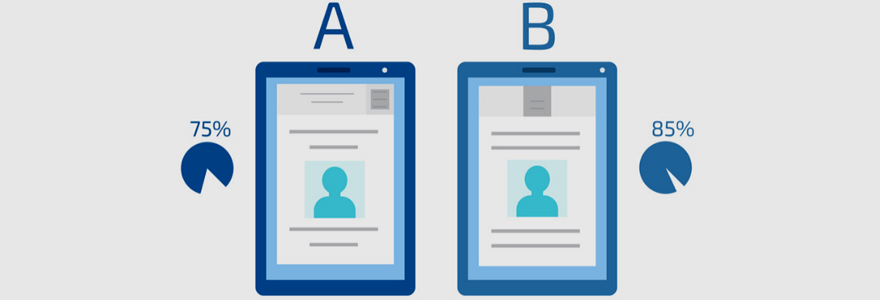
Many companies center their business operations around their websites and social media in the current digital era. Therefore, their marketing strategies are also centered around their websites. Companies use emails and other tricks to drive traffic to their sites and improve conversion rates. However, finding marketing strategies that work can be challenging. This is where ab testing comes in. Services like kameleoon.com help significantly with this form of testing.
What is ab testing?
A/B testing is an online experiment generally conducted on a website, mobile application, or ad. Its purpose is to test potential improvements compared to a controlled version, also known as an original version. A/B testing is a great way to generate more engagement and revenue from your income email. For instance, research indicates that A/B tested campaigns generate better click rates for email campaigns resulting in more revenue. In ab testing, two different email campaigns and determining how modest alterations can impact the results. Such changes include the subject line, name, content, and the time of sending. Ab experimentation solutions indicate the statistical reliability indicators that measure the probability of differences in results in samples not being attributed to chance.
How long should you run an AB test?
The trick to running a successful A/B test is being patient. Letting your test run long enough will guarantee you the best choice. In simpler terms, allowing the test to run long enough will help you be more confident when picking the winner. According to research, the recommended amount of time you should wait before drawing conclusions from an AB/test should be about two hours to twelve hours. Note that the amount of time you wait will be determined by the goal of the test. For instance, if your goal is to choose a winner based on clicks, an hour’s wait would be sufficient. On the other hand, if your goal is to pick a winner based on revenue, a 12-hour wait (at least) should do the trick.
How to calculate the duration of an A/B test
The amount of time you take to run an A/B experiment is not something you can guess off the top of your head. Remember that it will determine the conclusions you draw and how effective the technique improves your reach and promotes conversion rates. This is why you can calculate the duration. You can calculate the length of an A/B test based on various elements like:
Determining the duration of an A/B test using sample size
The first method you can use to calculate the duration of this test is by using the sample size. The sample size is the number of visitors that took part in the test. Naturally, the larger the sample size, the better your chances of detecting a difference. There are formulas for calculating the required sample size for this test. Once you have determined the right sample size, you can use this information to calculate the test duration. From a statistical perspective, calculating the duration of the experiment is as easy as dividing the sample size by the number of visitors to the tested page usually received. For instance, if your tested pace receives around two thousand visitors per day and your sample size is six thousand, the duration will be 6000/2000, which is three days. However, this does not mean that you should run your test strictly for three days. Researchers often recommend using the result as your starting point but not the final word. For instance, if your calculations indicate that you should run the test for three days, you may want to add three more and run it for at least a week. This allows you to cover all the different days when visitors interact with your site.
Calculating the duration of an AB test beyond the sample size
Other than the sample size, you can use other techniques to calculate the duration of an A/B experiment. In these experiments, representative samples are more critical for the accuracy of calculations and determining the best outcomes. Therefore, you can consider the representative sample when determining the duration. Experts recommend running a test for at least one or two weeks to get a representative sample. This way, you cover all days of the week and understand customers’ behaviors each day, including weekends. It would also be wise to run a test for a maximum of four weeks. However, you can extend your test to six or eight weeks if you want to cover the typical buying cycle.
Conclusion
A/B experimentation is arguably the most polarizing marketing tactic ever established. However, it would be a giant waste of time and resources if you do it wrong. On the other hand, it can significantly impact your conversion rates if you do it right. A/B testing training can also come in handy.